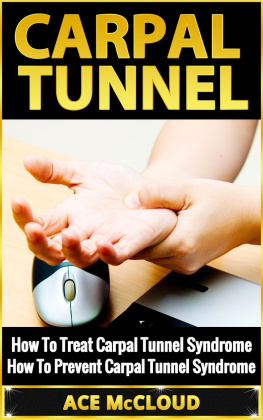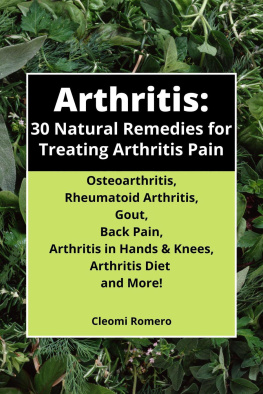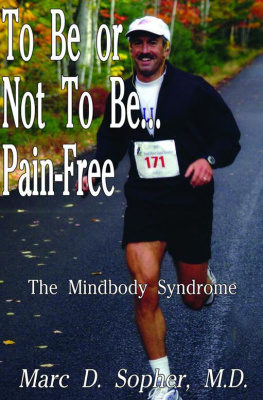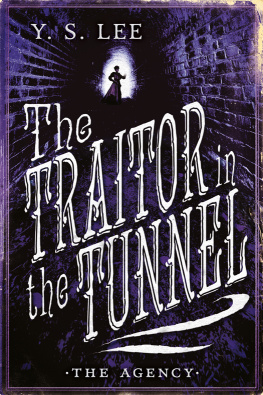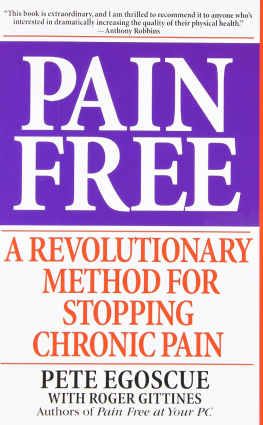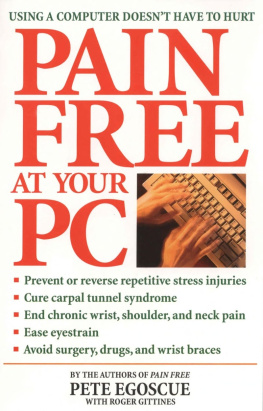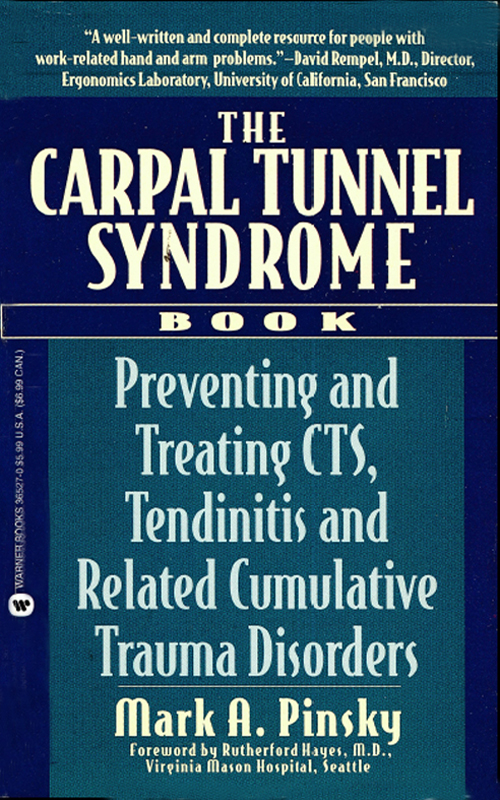The information presented in this book is intended to help you better understand and cope with cumulative trauma disorders of the upper extremities. This book has been reviewed by qualified physicians. It can be a valuable addition to your doctors advice, and it should be used under his or her care and direction. The author and publisher disclaim all responsibility for any adverse effects resulting from the information contained herein.
This book is not intended as a substitute for medical advice. The reader should regularly consult a physician or health care professional in matters relating to health and particularly in respect to any symptoms that may require diagnosis or medical attention.
WARNER BOOKS EDITION
Copyright 1993 by Mark A. Pinsky
All rights reserved.
Warner Books, Inc.
Hachette Book Group
237 Park Avenue
New York, NY 10017
Visit our website at www.HachetteBookGroup.com
First eBook Edition: October 2009
ISBN: 978-0-446-56874-6
One out of every two
workers is at risk.
Find out how to make
your job safer.
Cumulative trauma disorders (CTD) of the hands and arms account for almost two-thirds of all job-related illness. They are painful, frustrating, and sometimes disabling.
Most CTD sufferers dont realize that they have been injured until the damage is done. Many doctors arent trained to recognize the different CTDs, and misdiagnosis is common. The wrong treatment can do more harm than good.
If you work at a computer, as a carpenter, in a butcher shop, on an assembly line if you work at all, you have a one in two chance of developing a CTD. This book tells you how to overcome the odds.
* * *
Mark Pinsky has written a book that everyone exposed to Repetitive Strain Injury in the workplace should have by bedside and workside. Those who deal with the problem on an everyday basis may demur with an opinion here or an emphasis there, but The Carpal Tunnel Syndrome Book is an invaluable reference for patients and practitioners alike.
David J. Eisen, Research & Information Director,
The Newspaper Guild (AFL-CIO, CLC)
A book for the patient a must for the waiting rooms of all physicians who treat occupational injuries.
David M. Pagnanelli, M.D., Chief, Division of
Neurosurgery, Abington Memorial Hospital, Abington, PA
MARK A. PINSKY is the author of The VDT Book: A Computer Users Guide to Health & Safety and Every Citizens Enviornmental Handbook. For ten years, he was an editor of VDT News: The VDT Health and Safety Report. He has written scores of articles for national publications on CTS, CTDs, ergonomics, and related issues. He has suffered from CTS and from tendinitis, both associated with his computer work.

Thanks to Ellen Brown, Marvin Dainoff, Joann Davis, Dr. Larry Fine, Dr. Rutherford Hayes, Colleen Kapklein, Joan Lichterman, Naomi Mindlin, Jennifer Paget, Stephen Perloff, Dr. Linda Pinsky, Al Pinsky, Vern Putz-Anderson, Caroline Rose, and Jerry Sontag.

This book is not for specialists. It is not for hand surgeons or occupational health specialists who can, and do, draw on volumes of scientific research to understand work-related cumulative trauma disorders (CTDs) of the arms and hands.
This book is for people who need to understand why carpal tunnel syndrome and related disorders occur and what they can do about them. Primarily, it is for the millions of workers who may be at risk of developing CTDs, and for people who already have developed them. It is also for supervisors, managers, and employers, who need to understand what is happening to their employees.
For doctors, it is the sort of book that should be displayed in the waiting room. It encourages patients to prepare thoughtfully for their examinations, and it dispels common misperceptions that patients often bring into the examining room.
With the rising number of cases and the growing recognition that many aspects of modern work are contributing to the development of CTDs, this book fills a critical need for accurate, reliable, sensible, and straightforward information.
Rutherford Hayes, MD
Seattle, WA
February 1993

This book is not just about carpal tunnel syndrome, despite its title. It is a handbook on cumulative trauma disorders (CTDs) that affect the shoulders, arms, elbows, wrists, and hands.
Carpal tunnel syndrome is commonly but incorrectly used as a catchall description for what are technically known as upper extremity CTDs. Because my goal is to inform the underinformed, I chose a title for this book that is imprecise but familiar rather than one that is precise but obscure. Calling this book The Upper Extremity Cumulative Trauma Disorder Book would have been an effective way of discouraging potential readers. Those people who already understand the differences among carpal tunnel syndrome, lateral epicondylitis (tennis elbow), and stenosing tenosynovitis crepitans (trigger finger) may object, but then, they dont really need a book like this one.
Awareness is power when your goal is preventing illness on the job. I have written this book with the expectation that readers will use it to improve their health and their working conditions. For different people this will mean different things: The data entry clerk might read how she can adapt her computer work station to reduce the risk of carpal tunnel syndrome. The punch press operator might understand why his arms feel tired so much of the time. The shop foreman might get a fix on what his workers are saying when he hears them talking about ulnar deviations and Raynauds syndrome. And anyone concerned about the costs of workers compensation and disability insurance, lost production capacity due to ill workers, and the overall health of our work force will see why the current CTD epidemic is a serious work-related health problem. It is increasingly common to hear job safety specialists describe it as the workplace epidemic of the 1990s.
Most specialists in this field agree that half or more of all American workersabout 65 million peopleare at risk for developing one or more CTDs, though a much smaller number will actually develop them. There is every reason to believe that it is significantly less expensive to try to prevent CTDs and to diagnose and treat them aggressively than it is to let CTD cases advance out of control. This book takes the approach that awareness about how to prevent and treat CTDs is what you need most right now. Educate yourself and put your knowledge to work.
Do not expect to eliminate all CTDs simply because you have read this book, or even because you have read all of the supplemental materials listed in the references section at the back of the book. If your job is high-riskthat is, if it involves one or more of the factors associated with CTDsyour best efforts may not prevent CTDs. My own experience is testimony to this fact.
In 1987, while writing a book on computer health and safety that discussed CTDs, I developed carpal tunnel syndrome. Even though I knew better, I set up my computer with the keyboard too high. When I typed, I had to bend my wrists sharply toward my palmsa position called flexion. As a risk factor, this would be classified as an



